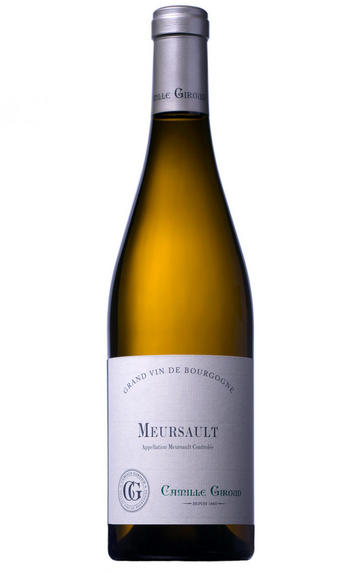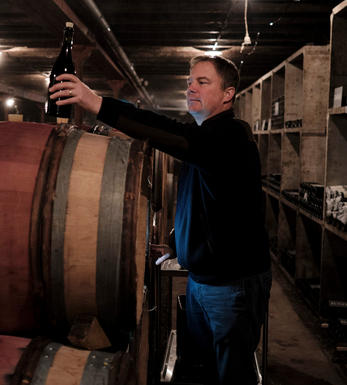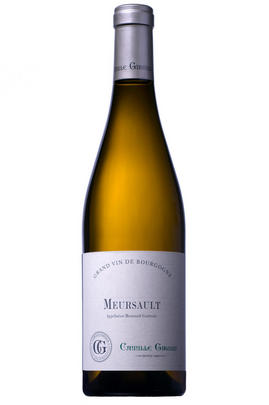
About this WINE

Maison Camille Giroud
Established in 1865, Maison Camille Giroud has a rich heritage rooted in Burgundy’s winemaking tradition. Initially a specialist négociant, they sourced wines from esteemed growers across the renowned Côte d’Or region, ageing them meticulously in their cellars for decades to achieve peak maturity.
In 2001, a consortium, including Napa Valley winery owner Ann Colgin and wine investors, took over, aiming to blend tradition with modern techniques and a terroir-driven approach. This led to innovations, like wooden presses and open vats, under the dynamic winemaker David Croix.
Most wines continued to be crafted from carefully selected grapes, many from old vines. Their commitment to natural winemaking practices, including native yeast fermentation and minimal intervention, set them apart.
In 2016, Carel Voorhuis continued the legacy of crafting pure, terroir-driven wines, maintaining Maison Camille Giroud’s reputation for excellence in Burgundy.

Meursault
There are more top producers in Meursault than in any other commune of the Côte d’Or. Certainly it is the most famous and popular of the great white appellations. Its wines are typically rich and savoury with nutty, honeyed hints and buttery, vanilla spice from the oak.
Even though it is considerably larger than its southerly neighbours Chassagne and Puligny, Meursault contains no Grands Crus. Its three best Premiers Crus, however – Les Perrières, Les Genevrières and Les Charmes – produce some of the region’s greatest whites: they are full, round and powerful, and age very well. Les Perrières in particular can produce wines of Grand Cru quality, a fact that is often reflected in its price. Meursault has also been one of the driving forces of biodynamic viticulture in the region, as pioneered by Lafon and Leflaive.Many of the vineyards below Premier Cru, known as ‘village’ wines, are also well worth looking at. The growers vinify their different vineyard holdings separately, which rarely happens in Puligny or Chassagne. Such wines can be labelled with the ‘lieu-dit’ vineyard alongside (although in smaller type to) the Meursault name.
Premier Cru Meursault should be enjoyed from five to 15 years of age, although top examples can last even longer. Village wines, meanwhile, are normally at their best from three to 10 years.
Very occasionally, red Meursault is produced with some fine, firm results. The best red Pinot Noir terroir, Les Santenots, is afforded the courtesy title of Volnay Santenots, even though it is actually in Meursault.
- 305 hectares of village Meursault. The best vineyards include Clos de la Barre, Tesson, Chevalières, Rougeot, Narvaux
- 132 hectares of Premier Cru vineyards (17 in all). The finest vineyards include Les Perrières, Les Genevrières and Les Charmes
- Recommended producers: Comte Lafon, Arnaud Ente, Coche Dury, Guy Roulot, Jean-Philippe Fichet, Patrick Javillier, François Jobard, Michel Bouzereau
- Recommended restaurant: Le Chevreuil

Chardonnay
Chardonnay is often seen as the king of white wine grapes and one of the most widely planted in the world It is suited to a wide variety of soils, though it excels in soils with a high limestone content as found in Champagne, Chablis, and the Côte D`Or.
Burgundy is Chardonnay's spiritual home and the best White Burgundies are dry, rich, honeyed wines with marvellous poise, elegance and balance. They are unquestionably the finest dry white wines in the world. Chardonnay plays a crucial role in the Champagne blend, providing structure and finesse, and is the sole grape in Blanc de Blancs.
It is quantitatively important in California and Australia, is widely planted in Chile and South Africa, and is the second most widely planted grape in New Zealand. In warm climates Chardonnay has a tendency to develop very high sugar levels during the final stages of ripening and this can occur at the expense of acidity. Late picking is a common problem and can result in blowsy and flabby wines that lack structure and definition.
Recently in the New World, we have seen a move towards more elegant, better- balanced and less oak-driven Chardonnays, and this is to be welcomed.



Buying options
Add to wishlist
Description
Situated up-slope and facing north-east, this is a vineyard which always offers a racy freshness. There is a welcoming peach profile to the nose, with a touch of hazelnut and dried apricot. The palate is stricter, however, with zesty citrus fruit and a pleasing minerality to the finish. There is lovely balance here. Drink 2020-2025.
Adam Bruntlett, Burgundy Buyer
In January 2002 Maison Camille Giroud was bought by an American consortium led by banker Joe Wender and winery-owner Ann Colgin, and a new chapter began. David Croix was installed as the winemaker/ technical director and tasked with a major revamping of the winemaking facilities and especially replacement and renewal of the old barrels to make wines in a much purer, more modern style. The company also owns 1.2 hectares of vineyards in and around Beaune. The 2016 vintage was a collaborative effort between the outgoing David Croix and his replacement, Carel Voorhuis, formerly of Domaine d’Ardhuy. The transition is a smooth one, with Carel’s gentle touch following on seamlessly from David’s elegant style. Carel described the 2016 vintage as lighter than 2015, with more elegance and better balance. It is clear he has a preference for 2016, highlighting the expressive, aromatic characteristics of the wines and calling them “ethereal”. He explained that it was important to avoid over-ripeness by picking in good time, and emphasised the value of gentle extraction to prevent obtaining hard tannins.
wine at a glance
Delivery and quality guarantee